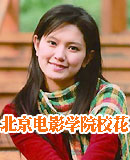 |
|
|
人物传记Passage 2http://www.sina.com.cn
2008年01月22日 15:08 新东方
Passage 2 (2006 湖南 E) Susan Sontag (1933-2004) was one of the most noticeable figures in the world of literature. For more than 40 years she made it morally necessary to know everything—to read every book worth reading, to see every movie worth seeing. When she was still in her early 30s, publishing essays in such important magazines as Partisan Review, she appeared as the symbol of American cultural life, trying hard to follow every new development in literature, film and art. With great effort and serious judgment, Sontag walked at the latest edges of world culture. Seriousness was one of Sontag’s lifelong watchwords (格言), but at a time when the barriers between the well-educated and the poor-educated were obvious, she argued for a true openness to the pleasures of pop culture. In “Notes on Camp”, the 1964 essay that first made her name, she explained what was then a little-known set of difficult understandings, through which she could not have been more famous. “Notes on Camp”, she wrote, “represents victory of ‘form’ over ‘content’, ‘beauty’ over ‘morals’.” By conviction (信念) she was a sensualist (感觉论者), but by nature she was a moralist (伦理学者), and in the works she published in the 1970s and 1980s, it was the latter side of her that came forward. In Illness as Metaphor—published in 1978, after she suffered cancer—she argued against the idea that cancer was somehow a special problem of repressed personalities (被压抑的个性), a concept that effectively blamed the victim for the disease. In fact, re-examining old positions was her lifelong habit. In America, her story of a 19th century Polish actress who set up a perfect society in California, won the National Book Award in 2000. But it was as a tireless, all-purpose cultural view that she made her lasting fame. “Sometimes,” she once said, “I feel that, in the end, all I am really defending...is the idea of seriousness, of tree seriousness.” And in the end, she made us take it seriously too. 1. The underlined sentence in paragraph 1 means Sontag ______. A. was a symbol of American cultural life B. developed world literature, film and art C. published many essays about world culture D. kept pace with the newest development of world culture 2. She first won her name through ______. A. her story of a Polish actress B. her book Illness as Metaphor C. publishing essays in magazines like Partisan Review D. her explanation of a set of difficult understandings 3. According to the passage, Susan Sontag ______. A. was a sensualist as well as a moralist B. looked down upon the pop culture C. thought content was more important than form D. blamed the victim of cancer for being repressed 4. As for Susan Sontag’s lifelong habit, she ______. A. misunderstood the idea of seriousness B. re-examined old positions C. argued for an openness to pop culture D. preferred morals to beauty 5. Susan Sontag’s lasting fame was made upon ______. A. a tireless, all-purpose cultural view B. her lifelong watchword: seriousness C. publishing books on morals D. enjoying books worth reading and movies worth seeing 【重点词汇】 noticeable adj. 引人注目的figure n. 人物, 尤其是著名人物 morally adv. 精神上symbol n. 象征 seriousness n. 严肃, 认真lifelong adj. 终身的 barrier n. 障碍argue for 赞成 pop culture 通俗文化represent v. 描绘, 表现 somehow adv. 不知何故victim n. 受害者, 牺牲品 【疑难长句】 When she was still in her early 30s, publishing essays in such important magazines as Partisan Review, she appeared as the symbol of American cultural life, trying hard to follow every new development in literature, film and art. 这个句子结构比较复杂。publishing和trying后面的句子作该句的状语, 所以该句的主要成分是she appeared as... life。 (参考译文)在30多岁的时候, 她在诸如Partisan Review等重要的杂志上发表文章。她被看做美国文化生命的象征, 努力追随着文化、 电影、 艺术方面的每一点新发展。 【答案解析】 1. D 细节理解题。题目问的是画线句子的意思。选项A, Sontag是美国文化的一个代表; 选项B, 促进了世界文学、 电影和艺术发展; 选项C, 发表过许多关于世界文化的文章; 选项D, 与世界文化发展同步。画线句子的意思是她走在世界文化的最前沿, 很明显正确答案为D。 2. D 细节理解题。题目问的是她最早是通过什么出名的。根据原文 “the 1964 essay that first made her name, she explained what was then a little-known set of difficult understandings”, 她的名字第一次为人所知是在解释a set of difficult understandings的时候, 因此正确答案为D。 3. A 细节理解题。选项A, 她既是感觉主义者又是伦理学者。根据文章第3段第一句话, 从信念上讲她是感觉论者, 从本性上讲她是伦理学者, 表述正确; 选项B, 她看不起通俗文化。根据原文第2段, 她的态度是argued for (赞成), 表述错误; 选项C, 内容应该比形式重要。根据“‘form’ over ‘content’”可知, 明显是形式比内容重要, 表述错误; 选项D, 认为抑郁是癌症患者得病的原因。从文章最后一段可以看出, 她对于该观点是持反对意见的。因此正确答案为A。 4. B 细节理解题。题目问的是就Susan Sontag的毕生习惯来讲, 她会做什么。选项A, 误解“严谨”的观点; 选项B, 对旧观点的重新审视; 选项C, 赞成通俗文化的公开; 选项D, 喜欢道德胜过美貌。根据原文 “In fact, re-examining old positions was her lifelong habit.” 很明显正确答案为B。 5. A 细节理解题。题目问的是Susan Sontag恒久的名望是建立在什么基础之上的。选项A, 持久、 通用的文化观点; 选项B, 她的人生格言: 严谨; 选项C, 出版道德书籍; 选项D, 喜欢值得看的书和电影。根据原文 “But it was as a tireless, all-purpose cultural view that she made her lasting fame.” 很明显正确答案为A。
特别说明:由于各方面情况的不断调整与变化,新浪网所提供的所有考试信息仅供参考,敬请考生以权威部门公布的正式信息为准。
【发表评论】
不支持Flash
|



